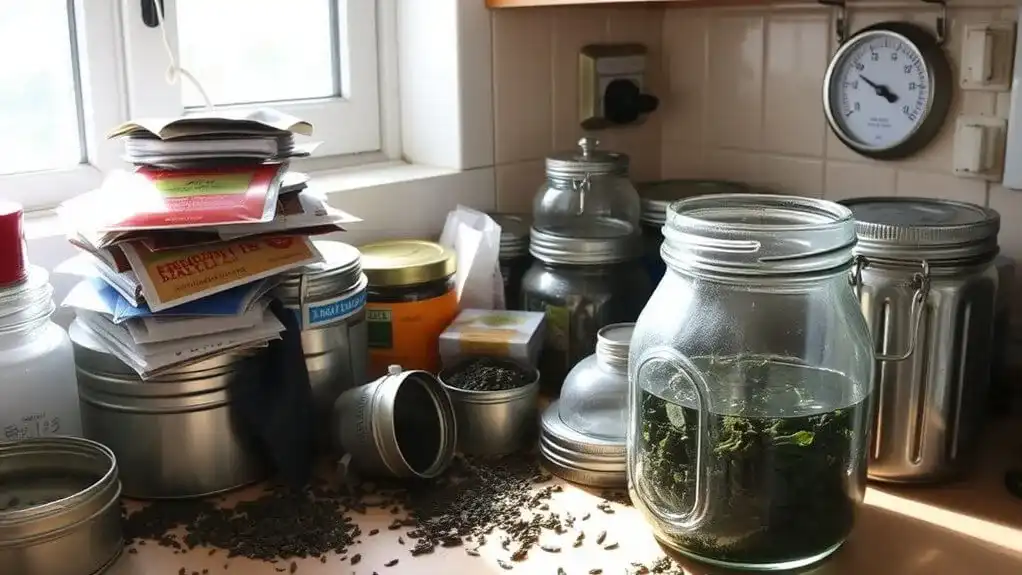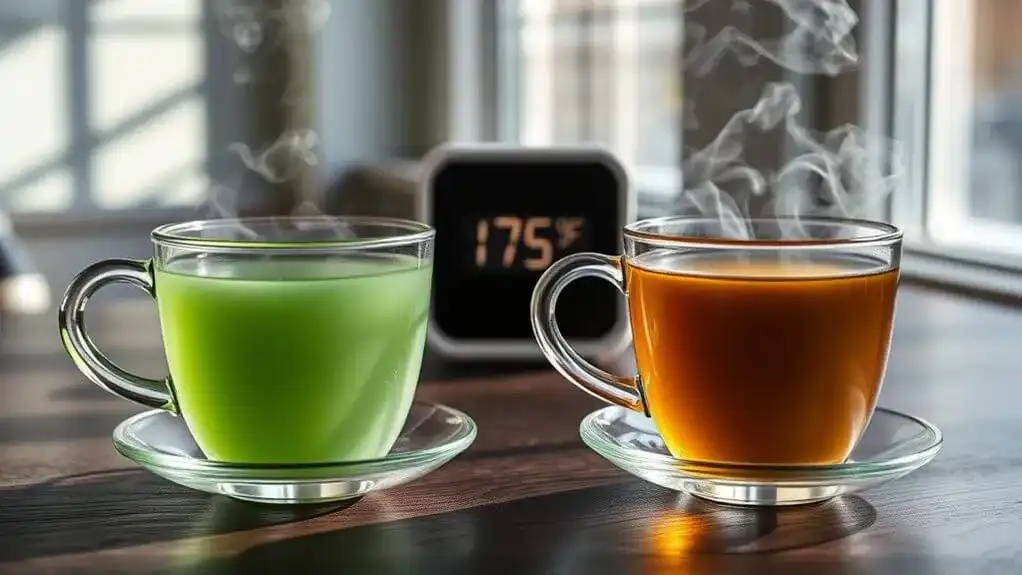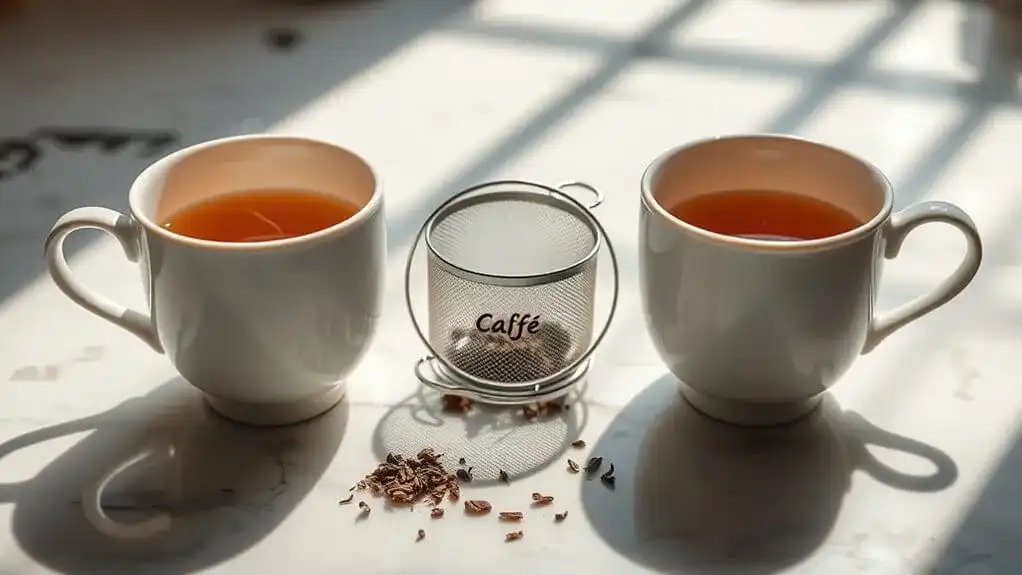Tea leaves can absolutely be reused, but success depends on choosing the right varieties and proper brewing techniques. High-quality loose-leaf teas like oolong and pu-erh excel at multiple steepings, while bagged teas and herbals don't hold up well. Different compounds in tea leaves dissolve at varying rates, allowing for 2-4 flavorful infusions when steeped correctly. Temperature, timing, and storage methods play vital roles in revealing the full potential of each subsequent steeping.
Key Points
- High-quality loose-leaf teas, particularly oolong and pu-erh, can be successfully steeped multiple times while maintaining distinct flavors.
- Different compounds in tea leaves dissolve at varying rates, allowing multiple flavorful infusions when properly steeped.
- Used tea leaves should be consumed within three hours or properly dried to prevent bacterial growth.
- Green and white teas typically yield 2-3 good steepings, while bagged and herbal teas aren't suitable for reuse.
- Adjusting steeping time and temperature for subsequent brews helps optimize flavor extraction from reused leaves.
The Science Behind Multiple Tea Steepings
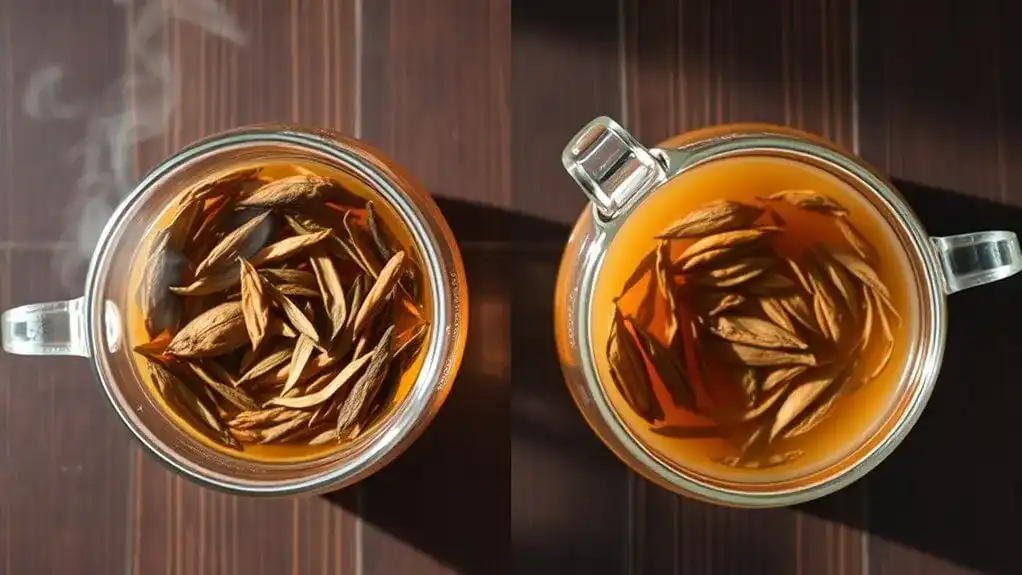
While many tea drinkers discard their leaves after a single use, the science of multiple steepings reveals a complex extraction process that can disclose layers of flavor and nutrients. Each steeping initiates a unique compound extraction phase, where different chemical components dissolve into the water at varying rates through diffusion. Oolong teas excel at multiple steepings, often producing 3-4 flavorful infusions. High-quality loose-leaf teas are particularly suited for multiple steepings, as their whole leaves release compounds gradually over successive brews.
The process works because tea leaves contain diverse compounds, including polyphenols, amino acids, and minerals, that don't all release simultaneously. These compounds are particularly abundant, as polyphenols alone comprise up to 40% of tea's dry weight. Water temperature plays an essential role in this dance of molecules, with higher temperatures accelerating the extraction but potentially degrading certain beneficial compounds. Multiple steepings create flavor complexity as different compounds emerge in subsequent brews, offering tea enthusiasts a more nuanced tasting experience. The key lies in adjusting steeping times and temperatures to optimize the release of desired compounds.
Which Teas Are Best for Reusing
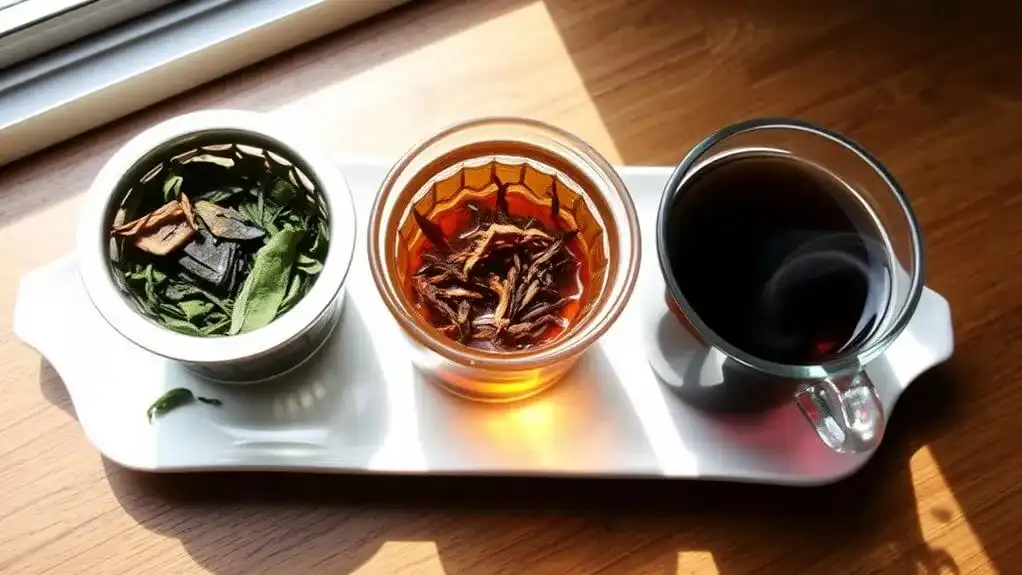
When selecting teas for multiple infusions, not all varieties offer the same resteeping potential. High-quality loose-leaf teas, particularly oolong and pu-erh varieties, excel at delivering complex tea flavor profiles across multiple steepings. Green and white teas also perform well, typically offering two to three flavorful infusions when proper steeping techniques are applied. These repeated infusions can reveal unique flavor developments throughout the steeping process. Herbal teas typically produce weak second brews and are best used for single steepings.
However, it's best to avoid reusing bagged teas, flavored blends, and lower-grade varieties, as they quickly lose their taste and complexity. These teas often lack the robust flavor compounds necessary for successful multiple steepings. Traditional Chinese brewing methods using a gaiwan or gongfu technique can significantly enhance the flavor retention across multiple steepings. For ideal results, tea enthusiasts should focus on premium loose-leaf varieties and adjust steeping times accordingly, adding 1-2 minutes for each subsequent infusion. This approach guarantees the fullest expression of flavor while maximizing the value of quality tea leaves.
Step-by-Step Guide to Perfect Tea Resteeping
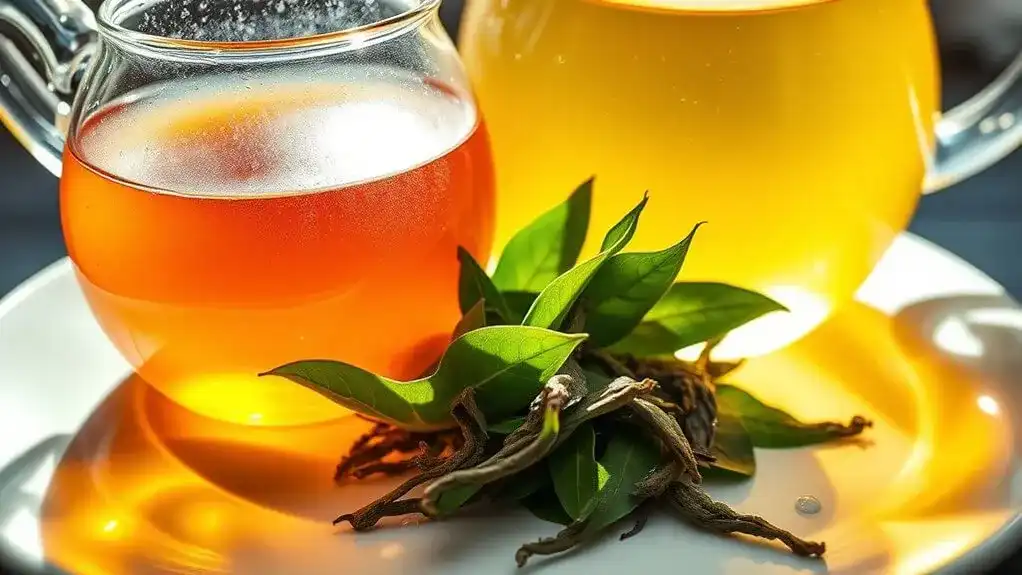
Following four key steps guarantees successful tea resteeping. First, use fresh, filtered water heated to the appropriate temperature – just below boiling for delicate teas and boiling for heartier varieties. Second, verify proper leaf submersion using a basket-style infuser that allows leaves to fully expand for ideal flavor extraction. Third, time each steeping carefully, starting with a short initial steep and adding 15-30 seconds for each subsequent infusion. Fourth, refresh the water between steepings while monitoring leaf condition. Some excellent teas can provide up to 10 steeps with proper technique. Storing your used tea leaves in an airtight container between steepings helps preserve their flavor potential.
These re-steeping techniques work best with high-quality loose-leaf teas, particularly oolongs and pu-erhs, which can yield multiple flavorful infusions. It's vital to avoid squeezing tea bags or over-steeping, as these practices can introduce unwanted bitterness. Remember to judge readiness by taste rather than color. For optimal results, used tea leaves should be re-steeped within hours to prevent potential bacteria growth.
Safety and Storage Tips for Used Tea Leaves
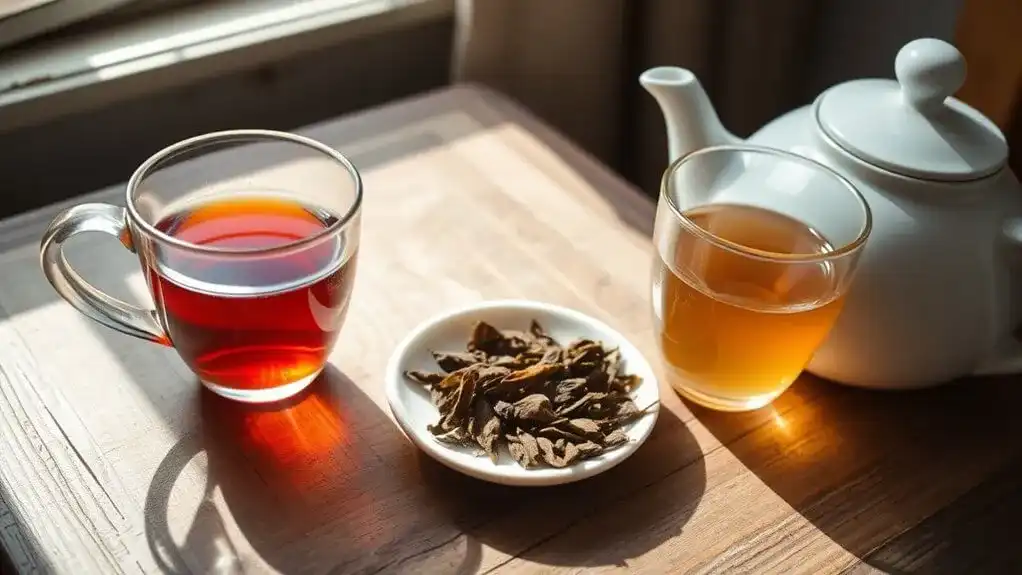
Although reusing tea leaves can be economical and flavorful, proper safety and storage practices are essential to prevent contamination. When reusing leaves, they should be consumed within three hours if kept in a strainer, as warm and moist environments promote bacterial growth. Tightly curled leaves often provide better results when reused since they release flavor more gradually.
For longer storage, proper storage methods involve thoroughly drying the leaves by spreading them on a paper towel in a cool, ventilated area. Once completely dry, store them in an airtight, opaque container away from heat, moisture, and strong odors. Light-blocking containers are crucial since exposure to light can degrade tea quality over time. Glass jars work well if kept in dark places, while metalized foil bags offer excellent protection. Tea can maintain its flavor for up to one full year when stored properly in airtight containers.
To minimize health risks, avoid reusing leaves that have sat at room temperature for extended periods. Regular cleaning of storage containers and proper drying techniques help prevent mold growth and bacterial contamination.
Creative Ways to Use Spent Tea Leaves

Spent tea leaves offer numerous creative applications beyond their initial brew, transforming what might be considered waste into valuable resources for home, garden, and lifestyle projects.
Tea leaves can enhance various tea leaf recipes, adding unique flavors and antioxidants to rice dishes, salads, and baked goods. As natural dyes, they create beautiful patterns on paper and fabrics, opening up possibilities for artistic expression and craft projects. Beauty enthusiasts can incorporate them into DIY skincare routines as exfoliants or eye masks, taking advantage of their caffeine content and antioxidant properties. Rich nutrients in tea can significantly boost plant growth when used as fertilizer in gardens. Premium whole leaf teas can be steeped multiple times while maintaining their distinct flavors and properties. When adding spent tea to gardens, use green tea varieties for higher nutrient content compared to black tea.
For home fragrance, dried tea leaves work effectively in muslin bags to freshen drawers and rooms. When heated, they release a pleasant roasted aroma that can naturally scent living spaces without artificial chemicals or synthetic fragrances.
Conclusion
Tea leaf resteeping isn't just about saving money – it's an art that reveals hidden flavors and untold stories in every cup. While some teas, like delicate green and robust oolong, enthusiastically share their secrets across multiple steepings, others stubbornly hold back. But with proper storage and technique, that second or third steeping might just reveal an unexpected depth you'd never discover otherwise. The real question is: what mysteries await in your next cup?

